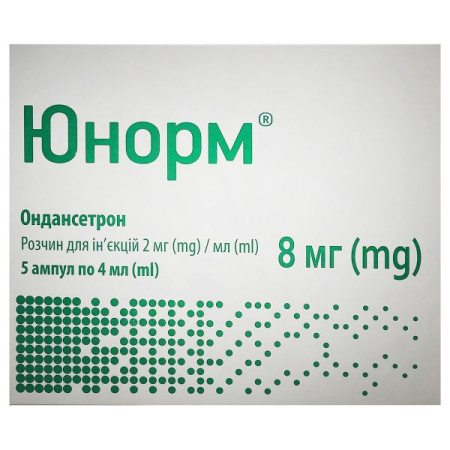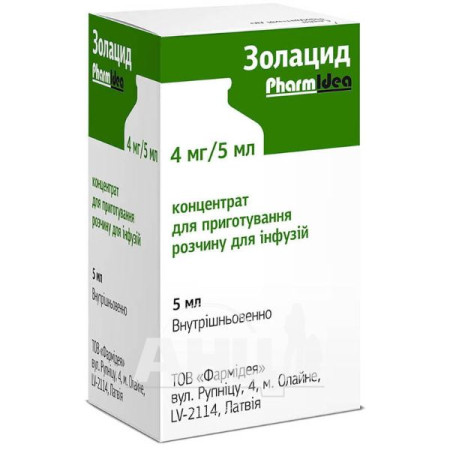Farmasulin H solution for injection 100 IU/ml bottle 10 ml No. 1

Pharmacological properties
Pharmacodynamics. The main action of insulin is to regulate glucose metabolism. In addition, insulin affects some anabolic and anticatabolic processes in various tissues. In muscle tissues, such effects include increased synthesis of glycogen, fatty acids, glycerol, and protein, as well as increased amino acid uptake and decreased glycogenolysis, gluconeogenesis, ketogenesis, lipolysis, protein catabolism, and amino acid excretion.
Pharmacokinetics. Farmasulin H is a fast-acting insulin. The drug Farmasulin H is a human insulin produced using recombinant DNA technology. The pharmacokinetics of insulin does not reflect the metabolic activity of the hormone.
The onset of effect of Farmasulin H is 30 minutes after administration. Peak C max is observed between the 1st and 3rd hours after injection. Duration - 5-7 hours.
During toxicological studies, no serious harmful effects associated with the use of the drug were identified.
Indication
Treatment of patients with diabetes who require insulin as a means of maintaining normal blood glucose levels.
Application
The dose and time of administration are determined by the doctor, taking into account the personal needs of each patient.
Farmasulin N is administered subcutaneously or intravenously.
Farmasulin H can be administered intramuscularly, although this method of administration is not recommended.
Subcutaneous injection should be given in the shoulder, thigh, buttocks or abdomen. Injections should be given in different parts of the body so that the same part is not injected more than once a month. Avoid inserting the needle into a blood vessel. Do not rub the injection site after administration. The patient should be given detailed instructions on the injection technique.
1. Instructions for use of the drug.
Cartridges. The solution for injection in 3 ml cartridges must be used with a pen injector that is CE marked in accordance with the recommendations of the pen injector manufacturer.
Dose preparation. Pharmasulin H in cartridges does not require resuspension; it should only be used if the solution is clear, colorless, free of visible particles, and looks like water.
To load the cartridge into the pen injector, attach the needle, and inject insulin, refer to the pen injector manufacturer's instructions for administering insulin.
The cartridges are not intended for mixing different insulins. Alternatively, separate pen injectors for Farmasulin H and Farmasulin H NP should be used to administer the correct dose of each drug.
Empty cartridges cannot be reused.
Vials. Use a syringe with markings that match the insulin dose. Use a syringe of the same type and brand. Carelessness when using a syringe can lead to incorrect insulin dosing.
dose preparation
1) Before taking insulin from the vial, it is necessary to check the transparency of the solution. If flakes appear, if the solution becomes cloudy, if a precipitate forms or if a substance appears on the glass of the vial, the drug is prohibited to use!
Farmasulin N does not require resuspension; it should only be used if the solution is clear, colorless, free of visible particles and looks like water.
2) Withdraw insulin from the vial by piercing the stopper, previously wiped with alcohol, with a sterile syringe needle. The temperature of the injected insulin should correspond to room temperature.
3) Draw air into the syringe to the mark corresponding to the required dose of insulin, and then release the air into the vial.
4) Turn the syringe with the vial upside down and draw up the required dose of insulin.
5) Remove the needle from the vial. Release the air from the syringe and check the correct dose of insulin.
When performing the injection, the rules of asepsis should be observed. To prevent purulent-inflammatory complications, do not reuse a disposable syringe.
To administer the required dose of each drug, it is necessary to use separate syringes for Farmasulin H and Farmasulin H NP.
2. Administer the drug. Administer the required dose of insulin according to your doctor's instructions.
Injections should be performed in different areas of the body, with the aim of injecting into the same place no more than once a month.
Children. The dose, administration schedule, and number of injections for children are determined by the doctor based on specific needs and in accordance with each specific case.
Contraindication
Hypoglycemia, hypersensitivity to FARMASULIN and any excipient of the drug, except in cases of desensitization therapy.
Side effects
Hypoglycemia is the most common side effect of insulin therapy in patients with diabetes.
Severe hypoglycemia can lead to loss of consciousness and, in some extreme cases, death. Data on the frequency of hypoglycemia are not provided, as hypoglycemia is related to the insulin dose and other factors, such as the patient's diet and level of physical activity.
Systemic allergy is a potentially serious side effect and is a generalized form of allergy to insulin, including rash on the entire body, shortness of breath, wheezing, decreased blood pressure, increased heart rate and increased sweating. Severe cases of generalized allergy are life-threatening. In some exceptional cases of severe allergy to Farmasulin H, appropriate measures should be taken immediately. Insulin replacement or desensitization therapy may be required.
Lipodystrophy may occur at the injection site.
Insulin resistance: Cases of edema have been reported with insulin therapy, particularly in patients with previously reduced metabolism that improved with intensive insulin therapy.
Special instructions
Any change in type or brand of insulin should be made under close medical supervision. Changes in strength, brand (corresponding to a specific manufacturer), type (rapid-acting, intermediate-acting, slow-acting), type (animal insulin, human insulin, human insulin analogue) and/or method of preparation (recombinant DNA insulin as opposed to animal insulin) may require a change in dose.
The dosage for patients treated with human insulin may differ from that used for patients treated with animal insulins. If dose adjustments are necessary, these may be made with the first dose or over the first few weeks or months.
In some patients who have developed hypoglycaemic reactions after being transferred from animal insulin to human insulin, the early warning symptoms of hypoglycaemia have been less pronounced or different from those previously experienced by these patients with animal insulin. Patients with significant improvement in blood glucose levels (e.g. due to intensification of insulin therapy) may no longer experience some or all of the early warning symptoms of hypoglycaemia and should be advised to do so. The early warning symptoms of hypoglycaemia may also be different or less pronounced in patients with long-standing diabetes mellitus and diabetic neuropathy or in patients taking other medicinal products, such as β-blockers, in addition to their current treatment.
Hypoglycemia or hyperglycemic reactions that have not been corrected can lead to loss of consciousness, coma, or death.
Incorrect dosing or discontinuation of treatment (especially in patients with insulin-dependent diabetes mellitus) may lead to hyperglycemia and potentially fatal diabetic ketoacidosis.
Antibodies may be produced during treatment with human insulin, although in lower concentrations than with purified insulin of animal origin.
The need for insulin changes significantly in cases of impaired function of the adrenal glands, pituitary gland, thyroid gland, renal or hepatic failure.
Insulin requirements may also increase during illness or emotional stress.
The need for dose adjustment may arise if the intensity of physical activity or usual diet changes.
Combined use with pioglitazone. Cases of heart failure have been reported with the combined use of pioglitazone with insulin, especially in patients with risk factors for heart failure. This information should be taken into account when prescribing the combination of Farmasulin H with pioglitazone. If this combination is used, the patient should be monitored for signs and symptoms of heart failure, weight gain and edema. Treatment with pioglitazone should be discontinued if cardiac symptoms worsen.
Use during pregnancy or breastfeeding. It is important to maintain adequate blood glucose levels in pregnant women who are treated with insulin (insulin-dependent and gestational diabetes mellitus). Insulin requirements usually decrease in the first trimester of pregnancy and then increase during the second and third trimesters. Women with diabetes should inform their doctors if they are pregnant or intend to become pregnant.
Strict control of blood glucose levels and overall health is vital for pregnant women with diabetes.
Women with diabetes may need to adjust their insulin doses and/or diet while breastfeeding.
Ability to influence the reaction speed when driving or using other mechanisms. Hypoglycemia can negatively affect concentration and reflex reactions, i.e. it is a risk factor in situations that require these qualities, for example, when driving a car or operating mechanical devices.
Patients should be advised to take precautions before driving to avoid worsening hypoglycaemia, particularly if early warning signs of hypoglycaemia are absent or subtle, or if worsening hypoglycaemia is frequent. In such circumstances, they should not drive.
Some medicines affect glucose metabolism. The doctor should be informed of any concomitant treatment taken simultaneously with human insulin.
If necessary, the use of other drugs should be consulted with a doctor. The need for insulin may increase in the case of the use of drugs with hyperglycemic activity, such as oral contraceptives, corticosteroids, thyroid hormones and growth hormone, danazol, β 2 -sympathomimetics (e.g. ritodrine, salbutamol, terbutaline), thiazides.
Insulin requirements may be reduced by the use of medicinal products with hypoglycaemic activity, such as oral hypoglycaemic agents, salicylates (e.g. acetylsalicylic acid), sulpha antibiotics, some antidepressants (MAO inhibitors), some ACE inhibitors (captopril, enalapril), angiotensin II receptor blockers, non-selective β-adrenoceptor blockers or alcohol.
Somatostatin analogues (octreotide, lanreotide) can both increase and decrease the need for insulin.
Incompatibility. Farmasulin H cannot be mixed with insulins from other manufacturers and insulins of animal origin.
Overdose
Symptoms. There is no specific definition for insulin overdose, as blood glucose levels are influenced by complex interactions between plasma insulin levels, glucose availability, and other metabolic processes. Hypoglycemia may be caused by excess insulin, taking into account the intensity of carbohydrate intake and the level of physical activity.
Symptoms of hypoglycemia include apathy, confusion, palpitations, headache, increased sweating, and vomiting.
Treatment. In cases of mild hypoglycemia, patients are given glucose or other sugar-containing products orally. In cases of moderate hypoglycemia, patients should be treated with i.m. or s.c. glucagon followed by carbohydrate with food after adequate recovery of the patient's condition. However, if glucagon is not available or the patient does not respond to its administration, glucose should be administered i.v. Immediately after regaining consciousness, the patient should be given food. It may be necessary to continue giving the patient carbohydrates and to continue monitoring the blood glucose level, since hypoglycemia may occur after clinical recovery.
Storage conditions
In the original packaging at a temperature of 2-8 °C (in a refrigerator). Do not freeze. The shelf life of the drug in cartridges and vials after opening is 28 days at a temperature of 15-25 °C, protecting from overheating and sunlight. Cartridges that are used should not be kept in the refrigerator.
Translation of the instructions can be
There are no reviews for this product.
There are no reviews for this product, be the first to leave your review.
No questions about this product, be the first and ask your question.









